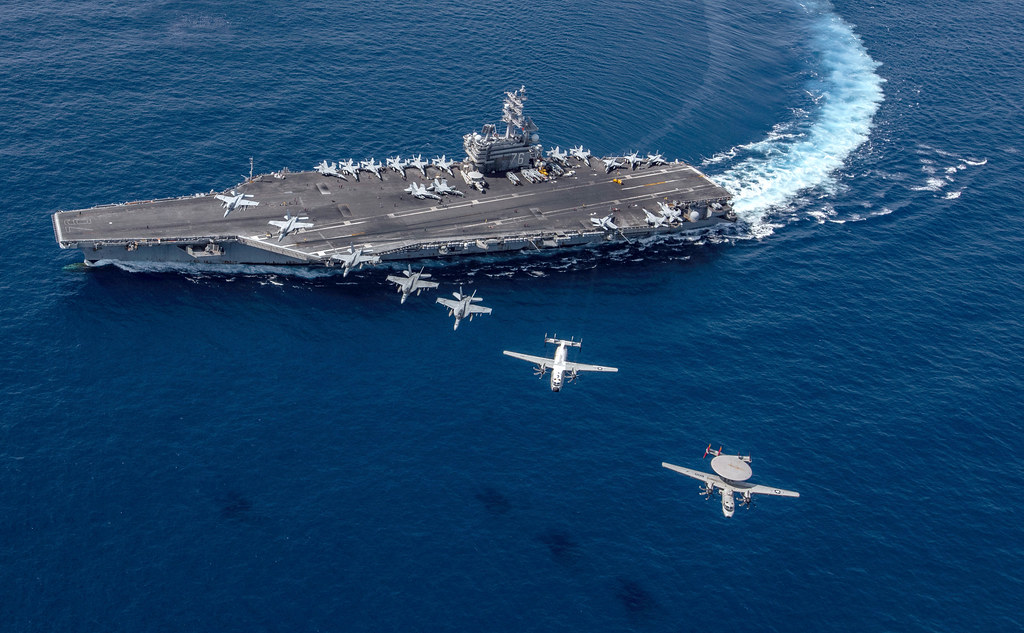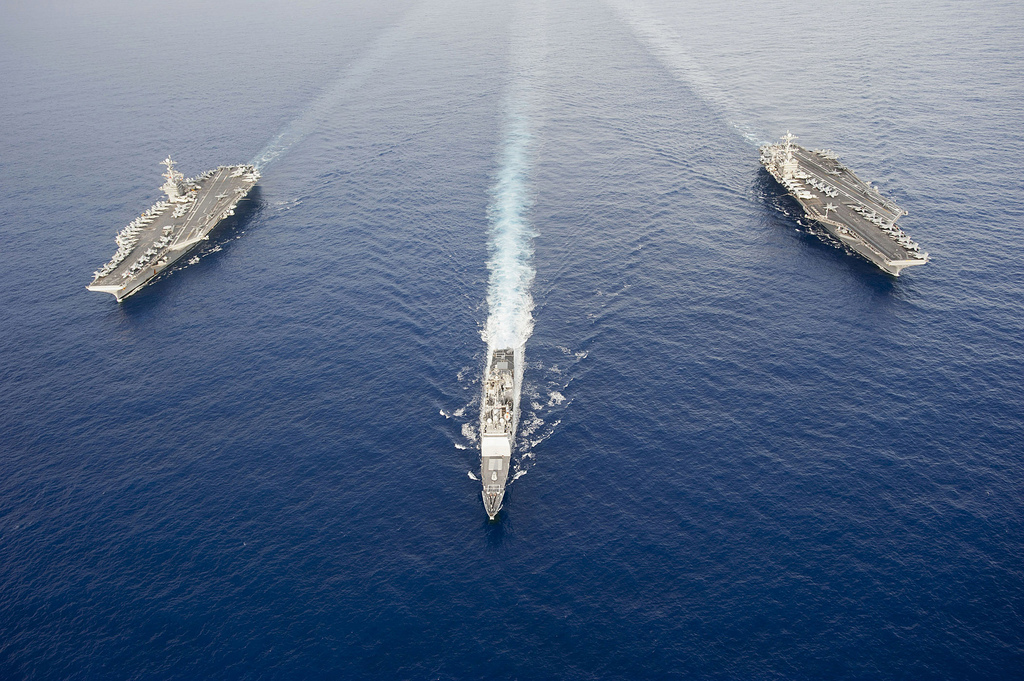
Large-deck, nuclear-powered U.S. aircraft carriers continue to be the centerpiece of America’s naval fleet, providing unmatched power projection and defensive capabilities across the world’s oceans.

Despite debates surrounding their cost and potential vulnerabilities, these titans of the sea are not only surviving but thriving in the modern era of naval warfare.

At the core of U.S. military strategy, the ten carriers currently in operation are consistently in high demand, with regional commanders often deploying them for extended overseas combat tours.

The United States remains the only nation capable of maintaining such a robust carrier presence globally, with three or more carriers deployed continuously at any given time. Their resilience, well-equipped defenses, and the innovation of new technologies enhance their role as central players in upholding U.S. interests.

Concerns about the hefty price tags of carriers are countered by the fact that they represent only a fraction of one percent of the federal budget to build, operate, and sustain.

The true cost effectiveness becomes evident when considering the alternatives, as carriers enable the U.S. military to conduct operations without relying on foreign bases, which would require a larger number of support vessels and a complex basing network susceptible to political and security complications.

The formidable defenses of aircraft carriers, featuring advanced sensors, radar-guided missiles, and rapid-fire Gatling guns, make them a tough target to hit. They operate within a carrier strike group protected by Aegis-equipped guided-missile warships and stealthy attack submarines, forming a formidable, multi-layered defense shield.

Combined with the air wing’s ability to detect and neutralize threats at great distances, these defenses render the carrier strike group an impenetrable force on the high seas.

Moreover, carriers employ dynamic operational tactics that maximize their survivability, avoiding mined areas and staying in open waters to reduce the risk of attacks. They are designed to move quickly, making tracking them a challenge for any adversary. Within minutes of being sighted, a carrier’s potential location can span thousands of square miles, complicating any targeting attempts by enemies.

The push for innovation has led to significant technological advancements, such as the Naval Integrated Fire Control – Counter Air program, which integrates all naval assets in an area into a seamless defensive network.

The upcoming Ford-class carriers will bring improved capabilities, with increased electric power and sortie rates, and the deployment of the stealthy F-35C fighters will further bolster the striking power and reach of the carrier air wings.

Despite the rise of fast anti-ship missiles and the growing military power of countries like China in the Western Pacific, the U.S. Navy continues to adapt its tactics and technology, maintaining the aircraft carriers’ status as an indispensable component of national security.

The clear advantage of these carriers is their ability to enforce U.S. interests globally, with an unlimited range and the flexibility afforded by nuclear propulsion.

In summary, U.S. aircraft carriers remain more than just a symbol of American strength; they are strategic assets with unparalleled offensive and defensive capabilities.

Their versatility, resilience, and technological superiority ensure they will continue to play a vital role in global maritime security for decades to come, effectively deterring potential adversaries and affirming the United States’ commitment to maintaining peace and stability on the international stage.
Relevant articles:
– 5 Reasons Navy Aircraft Carriers Remain Invincible on the High Seas, The National Interest
– Five Reasons The Navy’s Aircraft Carriers Are Becoming More Vital To U.S. Security, Forbes

